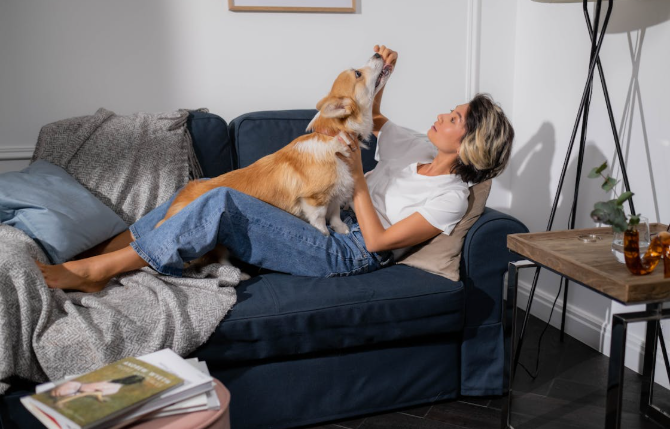Pet-Proof Painting: Tips for a Fur-Friendly Home
- Matej Svoboda
- Sep 11
- 3 min read
Pets bring joy, comfort, and companionship—but they can also bring muddy paw prints, scratches, and fur that clings to everything. If you’re painting with pets at home, you’ll want to choose products and techniques that stand up to pets while keeping them safe.
Today, we will discover paints that resist scratches and stains while keeping your walls looking fresh. This guide covers pet-safe paints and scratch-resistant paints, along with some practical tips to make painting your room easier when you have furry friends at home.
Why Pet-Proof Painting Matters?
Durability: Pets can be rough on walls and furniture—especially dogs and cats that rub, scratch, or leave marks.
Safety: Some paints release VOCs (volatile organic compounds) that can be harmful to pets.
Maintenance: Choosing the right paint finish makes cleaning up fur, slobber, or muddy paw prints easier.

Choosing the Right Paint for Pet-Friendly Homes
1. Look for Low-VOC or Zero-VOC Paints
VOCs release fumes that are toxic to pets (and humans). Choose eco-friendly, water-based paints that are low-odour and non-toxic once cured.
Great options:
Dulux Easycare (low odour, washable)
Farrow & Ball Modern Emulsion (low VOC, durable)
Colourtrend Interior Matt (low VOC, Irish-made)
2. Pick a Washable, Scrubbable Finish
Matt paints hide wall imperfections but are harder to clean.
Satin or Eggshell finishes strike a balance—washable but not overly shiny.
Washable matt paints (like Dulux Easycare or Fleetwood Washable Matt) are perfect for pet households.
3. Go for Durable, Scratch-Resistant Paint
While no paint is fully scratch-proof, high-quality durable emulsions resist scuffs better. On skirting boards, doors, or furniture, use satinwood or eggshell trim paint— these are more resilient to scratching. For walls, choose washable or “high-traffic” interior paints.
4. Think About Colour Choice
Avoid pure white walls if you have pets that shed—fur and marks will show easily. Mid-tone neutrals, greige, or textured finishes hide marks better. Darker trims on skirting boards can disguise scuffs from claws.
Preparing Your Home Before Painting
Create a Pet-Free Zone
Keep pets away from the painting area to avoid fur sticking to wet paint and prevent them from ingesting fumes.
Use Drop Cloths
Protect floors and furniture from accidental paw prints.
Ventilate the Space
Open windows and use fans to reduce fumes (even with low-VOC paints).
Painting With Pets at Home
Keep pets out of freshly painted rooms until the paint is fully dry and odour-free.
Provide alternative spaces with food, water, and comfort while you paint.
Store brushes, rollers, and paints out of reach—pets are curious and can knock things over.
Pro Tip: Even “safe” paints can be harmful if pets ingest wet paint, so always supervise or confine them.

Pet-Proofing Walls and Surfaces After Painting
Protect High-Wear Areas
Apply clear, washable varnish to frequently scratched spots (like door frames).
Use wall guards or decorative panels where pets sleep or scratch.
Regular Cleaning
Wipe down walls with a damp cloth to prevent build-up of fur or oils.
Use a lint roller for quick fur removal on painted furniture.
Train Pets Away From Walls
Use scratching posts, pet mats, and furniture covers to prevent damage.
How to Minimise Fur in Wet Paint
Groom pets before painting day—less loose hair means less chance of it floating into fresh paint.
Keep doors shut to limit fur drift.
Wipe down walls with a tack cloth before the final coat to catch stray hairs.
The Final Thoughts
Painting with pets doesn’t have to be stressful. By choosing the right pet-safe, durable paints and planning ahead, you can create a stylish home that stands up to paw prints, fur, and everyday life with animals.
Thinking about repainting with pets in mind? At Painter Adam, we use low-odour, durable paints perfect for pet-friendly homes. Contact us today for a free quote and expert advice and professional painting services.



